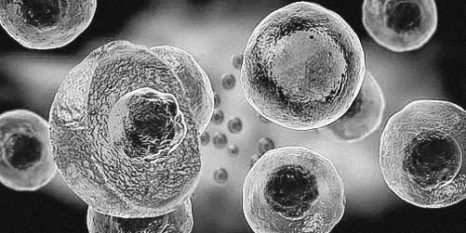Stem cell research
The use of stem cells for curing human ailments is controversial. But with effective regulation, it could be the future of medicine.
Most cells in the body are pre-programmed to have a specific function and can’t be trained to do anything else. However, our bodies produce a certain kind of cell known as a stem cell. This extraordinary piece of natural biotechnology is a blank canvas. It can evolve into any tissue in the body. This of course, makes it particularly exciting for resolving a huge range of medical problems – it could be used to cure anything from cancer and neurological conditions to arthritis and heart disease.

The issue with stem cells, however, is that the main way to source ‘blank canvas’ cells – known as embryonic stems – is from aborted or donated foetuses. Given that abortion is a highly fraught topic, it has been hard enough to access the cells for research, let alone for general use in human health. Until 2012, that is, when Sir John Gurdon and Shinya Yamanaka discovered that normal human cells can be reprogrammed to become stem cells. Gurdon and Yamanaka became Nobel Prize-winners and the future of stem cell research has taken a fascinating new turn.
Meanwhile, stem cell ‘cures’ are already available all over the world, using something known as a ‘differentiated stem cell’. After we are born, the embryonic stem cells, become ‘differentiated stem cells’ – their function becomes broadly designated to a task. They have the potential to adapt to different roles, but within a specific category – so, haemopoietic stem cells can become white or red blood cells or platelets; mesenchymal stem cells can become bone, muscle or cartilage cells. There a many issues with transplanting these stem cells, however – finding an exact tissue match being just one. Patients have to undergo chemotherapy before the transplant, and many post-operative drugs have to be taken to prevent the body rejecting the new tissue. We’re certainly not at the stage where a bit of stem cell tissue can be inserted into your damaged cartilage and your joints will magically grow new tissue.
While stem cell research has the potential to be a multi-billion dollar industry in the realms of the tech revolution of the last 20 years, the US Food and Drug Administration (FDA) has moved to shut down many stem cell clinics on the basis that their work is still too experimental and that their claims of cures are as yet unrealistic. As with any development in biotech and medicine, innovation comes with risk, as an as-yet unregulated industry banks on people’s desperation for a cure. While the US has an iron hand of control in its pharmaceutical and medical developments, there are many other countries – including the UK – where ‘cures’ using stem cells make unrealistic and potentially dangerous claims.
Stem cell research has the undeniable potential to change human health. And where there’s hope, there is investment – which drives both genuine research and snake-oil quacks in equal measure. It is for this reason that regulation and accountability is so important – while it might be inhibiting to the rapid growth of the market, it is vital for effective progress in the field.

